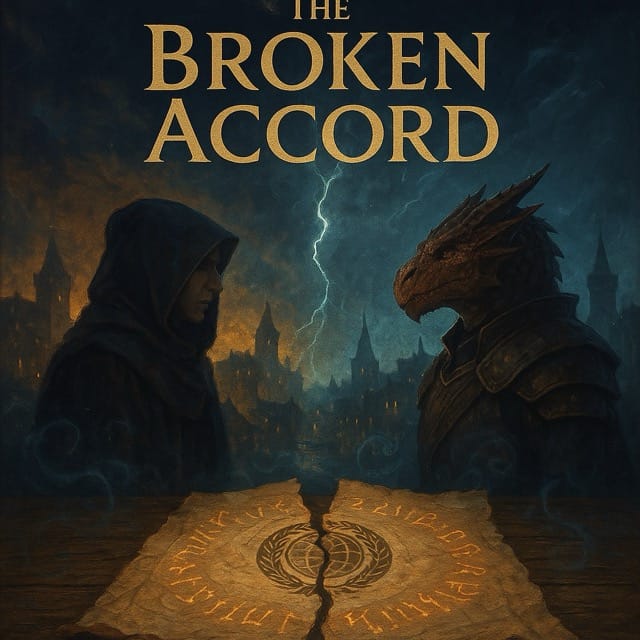A bit of Fun
Technology is cool. We are not living in a cave, sleeping in a pile of leaves, and freezing to death in the cold because we discovered the means to assemble tools to help us build a nice shelter, sew up a mattress, and start a controlled fire.
Technology is cool. We can share our thoughts, passions, and experiences with anyone in the world whole cares to read them.
Technology is cool. It does really wild things like takes your simple idea, and turns it into a complex workflow automatically and then gives you results which often times meet or exceed your expectations. Then we get complacent. We expect that magical process is now the normal.
Do you remember before there were mobile phones? Do you remember before texting was so huge? Do you remember when you had to go to a library with a list of things you were curious about and spend hours looking them up in an encyclopedia?
Technology is cool.
Get to the point already
I have been playing with AI for the past couple of years. It was a sort of a silly little thing to do while I was making music for my podcast. Sometimes I’d ask it for ideas, or to rewrite my ideas into different words that meant the same thing, or give me a list of titles. Not that I really cared about titles for any of these pieces I wrote. But sslowly over that time, as the technology got better, the conversations began to pass the Turing Test. At least for me.
Then I my interest in Table Top Role Playing Games got reignited. And suddenly, I had an infinite list of rollable tables for character generation, worldbuilding mechanics and other tools of the trade at my disposal.
Then I realized that it was still a lot of work to organize these notes, so I began to follow my weird little quirk about calendars and tasks lists. Trying to connect those with AI so that I could have an automated assistant.
Technology is cool.
Then I invented a company. A fictional entity. It has a fictional roadmap, so that I can explore the processes of putting generative artificial intelligence into scenarios that would impact a business. I quickly began to see limitations of the technology once it was moved out of the parlor of a chatroom environment.
It has to be talked to just right. It has to have not only the proper prompt for you to get the proper results, but the proper information has to be introduced to it in the proper sequence. There’s a new term for this, Context Engineering.
There’s also vibe coding. That one is kinda fun, write a little prompt in a window of a computer program you would like to see, and then poof! There is the code. NOTE: This works much much better if you actually have this transaction happening in an application designed to write and produce code, because then the AI can use some tools to create the code in a document which can be executed. Its not as fun when you have to copy and past a lone list of code and try to run it. Then try to debug it. Then try to debug it. Then try to debug it.
That’s just plain old coding except you don’t know the first thing about the language.
When you have a development environment, its amazing, especially if your assistant is an agent not a chat partner. The difference is pretty profound. The chat partner’s focus is on quickly, and mostly accurately replying to whatever you just said. The agent is operating from a standpoint where it needs to figure out what you are asking it to do, find the inherent problem to solve and come up with the solution, check the answer and fix any obvious and glaring mistakes in it and then present it to you.
Did I say this already?
Technology is cool.
You can take the results from a chatbot or an agent, and feed them into another chatbot or agent, many times and each step of the way you can add little instructions on what to do next. And suddenly, you are putting significant context into the process. The results from this expended even further once companies began to equip their bots with memory that was persistent across a conversational thread or within a project folder. You could even add documents which needed to be referred to as guidelines and the result began to be even more magical.
So in my fictional entity, I created personas. Characters with backstories and “lives” they wanted to lead to populate departments, to generate TPS reports, to process TPS reports and to analyze TPS reports. I experimented with sticking them in discord servers, with reading my emails, with automating the process of automating the process of TPS reports.
Hey Nerd, What happened to the TTRPG?
It’s still kicking around, its still kicking. I just had to take a detour through some weird stuff, the things we have been hearing marketing catchphrase and jingles about as the hype swells like a beach two days before a hurricane lands. Now, not only do i have a fake company I write about (but have not really published much about), I have a fictional planet that I write about. These two thing have become interwoven and for myself I can not really extricate them. I work on one, it is work on the other. In fact the fictional company, works on the worldbuilding, and secret time, don’t tell my players, the fictional company staff are in the fictional world tying them deeply together - so now I have this enormous cross genre storytelling environment full of swords, sorcery, dragons, laser beams, mech suits, and spaceships.
But all of these words are really just meant to serve as a preamble to introduce Eliana Riviera, the Chief Technical Officer of Eckenrode Muziekopname.





